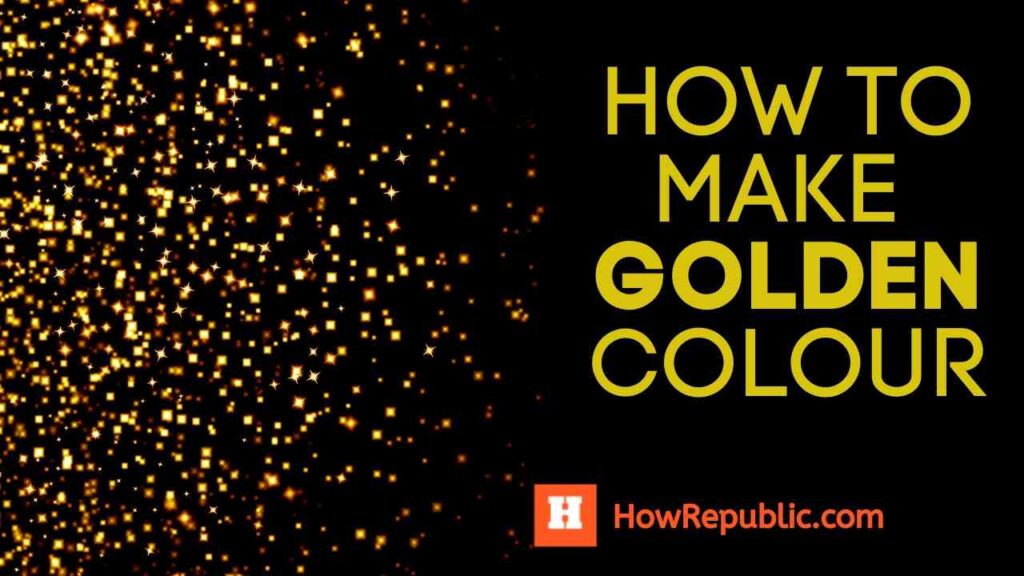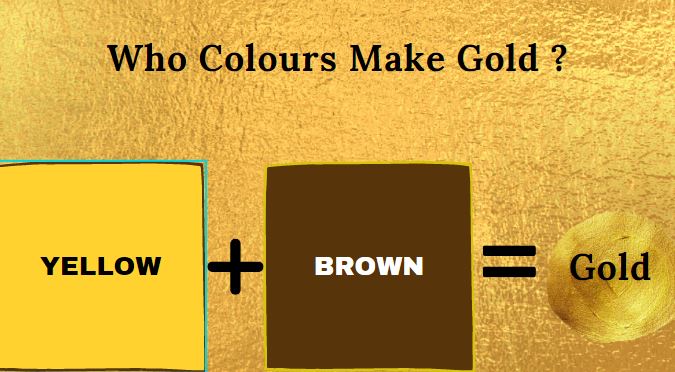Our brain usually associates the gold colour with wealth. Try imagining a pile of coins, inevitably all you can see is a golden hue. Golden is always the striking shade in a portrait, the eye-catching piece in the decoration and the dramatic flare in a dress.
Painting kits usually come with twelve primary colours. But some paintings undoubtedly demand golden. And it is not economical to have every possible shade on hand. Golden colour can be an expensive utility to buy in case of furniture paintings. Some tints of golden paint colours which have a lustrous shine are costly too. You can solve this complication like every other budget problem, make it a DIY project! To aid in this task, we have described how to make golden colour from your ordinary palette, below.
Table of Contents
How To Make Golden Colour:
Primary shades you will need:
Golden lies on the warmer side of the colour wheel, just between yellow and orange. However, the most basic shades required are brown and yellow. Using these shades in the right amount will create an elemental form of golden for you. Adding more yellow will suffice for a more vibrant hue.
Necessary steps:
Put a dollop of the yellow colour on your palette. Add the brown colour gradually. Be mindful of the fact that it is easier to darken the shade then to lighten it up. For this reason you need to add brown to the mix. Keep testing it on a paper so that you can see how it looks after drying. This way, you can achieve the exact shade that you desire.
Developing a primary shade:
Sometimes, the brown shade is excluded in an ordinary palette purchased from the market. Or the tone is darker or lighter than what you need. Or your colour is finished. For those situations, you can replace brown with equal quantities of red and blue, they will get the job done for you. Then add yellow to the mixture to create goldenly. If you think there is too much yellow, add a drop of both red and blue to even it out. And if you desire a more browned golden, add a bit more red then the blue. For a brighter golden, increase the amount of yellow in it.
Getting a radiant hue:
Using a darker brown colour can make your golden look dull and matte. Rest assured, you can deal with this with a small trick. To get a lighter, more radiant hue, add a bit of white colour to the mixture. It will enhance its aesthetic property and lighten it up. Add small quantities of white to start with, and You don’t want to make it too dull. For a more realistic, three dimensional look, add a bit of the orange shade too. It will provide a more burnished look to your mix of golden.
Achieving a metallic look:
The pure golden is one with shine and lustre. You can never have too much of it on a painting. Unfortunately, you cannot achieve that metallic, lustrous shine just by mixing colours. Paint manufacturers use gold powder with a watercolour binder so that the sheen of gold won’t chip off and to achieve that glossy finish. You can use mica too. You will notice a more gleaming, polished result once you have incorporated these elements. Using golden glitter can also work. You can mix it in the paint or sprinkle it on top of your colour after applying it for a more layered effect. A metallic base is also used for this purpose. In this case, particle size and severity of the powder are essential factors to consider because they are directly proportional to the shimmer and reflective index that the base will provide.
The colour golden comes in both acrylic and metallic tones. However, it can be quite a tricky colour to recreate. When too light, it appears to be a simple shade of yellow and if dulled, seems like a more basic tint of orange. Therefore, our step by step guideline will go a long way to solve this issue. So the next time you think your painting doesn’t have that oomph factor, paint it golden!
Frequently Asked Questions To Make Gold Colour:
What Two Colors Make Gold ?
The most basic shades required are brown and yellow.


